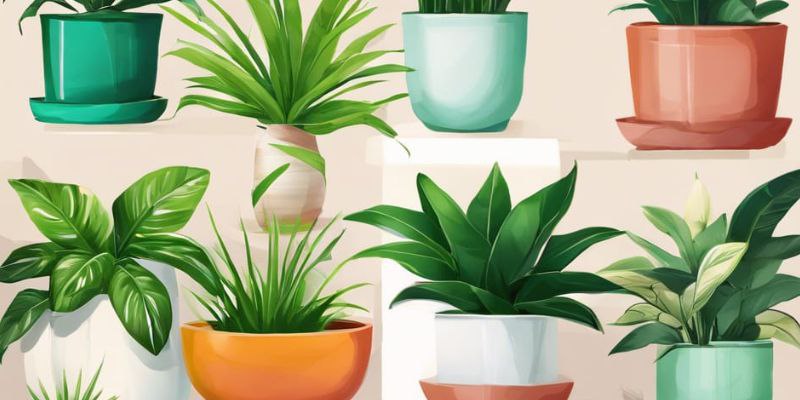Indoor air quality is crucial for maintaining a healthy living environment. Many common household plants not only enhance the aesthetic of your home but also help purify the air by removing toxins and releasing oxygen. Here are some of the best plants to consider for improving your home’s air quality.
Snake Plant (Sansevieria)
The Snake Plant is known for its resilience and ability to thrive in low light conditions. It can filter out harmful toxins such as formaldehyde and benzene while releasing oxygen at night, making it an excellent choice for bedrooms.
Spider Plant (Chlorophytum comosum)
Spider Plants are easy to care for and can absorb pollutants like carbon monoxide and xylene. They are also known for their ability to produce baby plants, adding to their charm and appeal.
Peace Lily (Spathiphyllum)
The Peace Lily is not only visually stunning with its elegant white flowers but is also highly effective at removing toxins like ammonia and benzene. It prefers indirect light and requires regular watering to keep its soil moist.
Pothos (Epipremnum aureum)
Pothos is a popular trailing plant that is very forgiving for beginners. It can eliminate indoor pollutants such as formaldehyde and is adaptable to a range of light conditions, making it perfect for any room.
Areca Palm (Dypsis lutescens)
The Areca Palm is a fantastic air purifier that can help humidify the air, making it a great option for dry climates. It can filter toxins and is safe for pets, making it a family-friendly choice.
Rubber Plant (Ficus elastica)
Rubber Plants are known for their large, glossy leaves and their ability to remove toxins from the air. They thrive in bright, indirect light and require minimal care, making them suitable for busy households.
Care Tips for Indoor Plants
- Light Requirements: Understand the light needs of each plant. Some thrive in bright sunlight, while others prefer low light.
- Watering: Overwatering is a common issue. Ensure pots have drainage holes and only water when the top inch of soil feels dry.
- Humidity: Some plants enjoy higher humidity. Consider using a humidifier or placing a tray of water near plants that need it.
- Fertilization:During the growing season (spring and summer), feed your plants with a balanced fertilizer to promote healthy growth.
Conclusion
Incorporating these plants into your home can significantly improve indoor air quality while adding beauty and life to your space. By choosing the right plants and providing them with proper care, you can create a healthier environment for you and your family.
